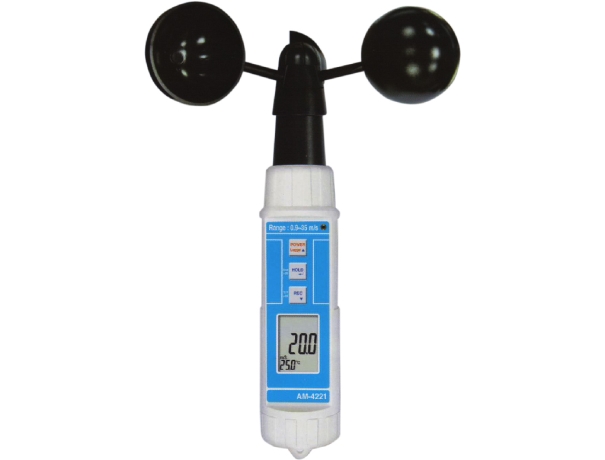Wind turbines harness the kinetic energy of wind to generate electricity. The energy in wind is directly proportional to the cube of its speed, making wind speed a critical parameter to monitor and control.
What is an Industrial Wind Speed Sensor?
An industrial wind speed sensor, often referred to as an anemometer, is a specialized instrument designed to measure wind speed accurately. It is an integral component of wind turbines and meteorological systems. These sensors come in various designs, including cup anemometers, vane anemometers, and sonic anemometers, each with its unique working principle and applications.
Types of Industrial Wind Speed Sensors
Cup Anemometers (Traditional Anemometers): Cup anemometers consist of rotating cups mounted on a horizontal axis. The speed of rotation is directly proportional to wind speed.
Cup anemometers operate on the principle of drag force. As wind flows over the cups, it exerts a force, causing them to rotate. The rotation speed is directly proportional to the wind speed. Modern cup anemometers are equipped with electronic sensors to provide accurate readings.

Vane Anemometers: Vane anemometers use a rotating vane to measure wind speed. They are highly accurate but less common in wind energy applications.
Sonic anemometers utilize ultrasonic pulses to measure wind speed and direction. They work by measuring the time it takes for ultrasonic waves to travel between transducers in different directions. This technology ensures precise and real-time wind data.
Sonic Anemometers: Sonic anemometers employ ultrasonic sound waves to measure wind speed. They are known for their precision and are widely used in research and meteorological stations.
Applications of Industrial Wind Speed Sensors
Industrial wind speed sensors find applications in various sectors:
Wind Energy
Wind turbines rely on accurate wind speed measurements to adjust blade angles and optimize power output. This leads to increased energy production and reduced wear and tear.
Aviation
In aviation, Anemometers are essential for safe take-offs, landings, and in-flight operations. Pilots rely on wind data to make critical decisions.
Meteorology
Meteorological stations use wind speed sensors/anemometers to monitor weather patterns, issue warnings, and gather valuable data for climate research.
Importance of Accurate Wind Speed Data
The significance of precise wind speed data cannot be overstated. It directly impacts the efficiency and safety of various industries, especially wind energy production. Accurate wind speed measurements enable:
- Optimized Energy Production: Wind turbines can adjust their orientation and blade pitch in real-time, maximizing electricity generation.
- Safety: Wind speed data helps in determining safe operating conditions, preventing equipment damage and accidents.
- Research and Development: Meteorologists and scientists rely on wind speed data to study climate patterns, predict weather changes, and develop advanced forecasting models.